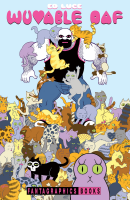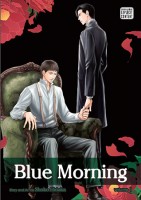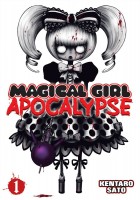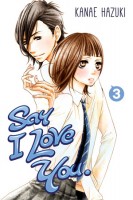My News and Reviews
Last week was a bit slow at Experiments in Manga as I decided to take it a little easy on myself, but I did still post a couple of things in addition to the usual My Week in Manga feature. The most recent manga giveaway was posted, for one, and there’s still time to enter for a chance to win a complete set of Yumi Tamura’s shoujo action thriller Chicago. I also posted an in-depth review of Minae Mizumura’s award-winning A True Novel which I absolutely loved. In part it’s a reimagining of Emily Brontë’s Wuthering Heights set in postwar Japan, but it’s not at all necessary to have read Brontë’s novel to appreciate Mizumura’s work.
Elsewhere online, Mangabrog has posted a translation of an interview of Parasyate‘s Hitoshi Iwaaki from 2005. Justin interviewed Sekai Project for Manga Bookshelf about the company entering the manga market. In licensing news, Kodansha Comics has picked up some Fairy Tail and Noragami side stories and Vertical Comics confirmed its acquisition of Maybe’s The Abandoned Sacred Beasts. Also of note, Humanoids will be releasing an anthology in 2016 called The Tipping Point which will include contributions from mangaka Katsuya Terada, Naoki Urasawa, Taiyo Matsumoto, and Atsushi Kaneko in addition to other comics creators from Europe and the United States.
Quick Takes
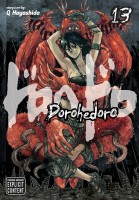 Dorohedoro, Volumes 13-16 by Q Hayashida. Even though I love Dorohedoro, it’s been a while since I’ve read the series; I like to save up a few volumes to read all at once. The manga is now entering what I believe will be its final story arc. Granted, Dorohedoro tends to be all over the place with all sort of plot lines weaving in and out, so its difficult to identify distinct story arcs, but Hayashida is now bringing it all back together again. She’s even tying in what initially seemed to be extraneous side stories from earlier in the series more cohesively. Dorohedoro is such a bizarre manga, somehow managing to be sweet and charming at the same time it is disgusting and grotesque. Hayashida’s artwork is marvelous, creating horrific, nightmare-inducing images and an atmosphere that’s dank, dirty, and dingy. But the series is also fun and funny, with a quirky sense of humor and a peculiar fixation on food. At this point, though there is still comedy, Dorohedoro is actually getting pretty serious and dramatic. En’s dead and the rest of the family is currently homeless and on the run; the Cross-Eyes have taken over, but they seem to be losing control of the extremely deadly situation.
Dorohedoro, Volumes 13-16 by Q Hayashida. Even though I love Dorohedoro, it’s been a while since I’ve read the series; I like to save up a few volumes to read all at once. The manga is now entering what I believe will be its final story arc. Granted, Dorohedoro tends to be all over the place with all sort of plot lines weaving in and out, so its difficult to identify distinct story arcs, but Hayashida is now bringing it all back together again. She’s even tying in what initially seemed to be extraneous side stories from earlier in the series more cohesively. Dorohedoro is such a bizarre manga, somehow managing to be sweet and charming at the same time it is disgusting and grotesque. Hayashida’s artwork is marvelous, creating horrific, nightmare-inducing images and an atmosphere that’s dank, dirty, and dingy. But the series is also fun and funny, with a quirky sense of humor and a peculiar fixation on food. At this point, though there is still comedy, Dorohedoro is actually getting pretty serious and dramatic. En’s dead and the rest of the family is currently homeless and on the run; the Cross-Eyes have taken over, but they seem to be losing control of the extremely deadly situation.
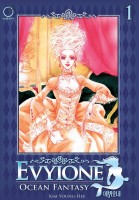 Evyione: Ocean Fantasy, Volume 1 by Young-Hee Kim. Back in the day, Udon Entertainment had a line of manwha which, sadly, didn’t end up going very far. Tragically, only the first volume of Kim’s twelve-volume series Evyione: Ocean Fantasy was translated and released. It’s admittedly disappointing that there isn’t more, but the first volume of Evyione serves as a sort of prologue and is well worth checking out even though the rest of the story will likely never be translated. The manhwa is in part inspired by Hans Christian Andersen’s The Little Mermaid except that in the case of Evyione, it’s the king of the sea who has fallen in love with a human princess. The artwork in the series is stunningly gorgeous. The ocean scenes and merfolk are beautiful, sensuous, and slightly disconcerting. There’s a touch of horror to the king’s transformation into a human, keeping with the darker aspects of the original story. On land, Kim pays particular attention to the characters’ clothing and attire, the dresses especially are intricately detailed. Although Evyione is obviously based on The Little Mermaid, it’s not a simple retelling and incorporates political and court intrigue as well as additional plot elements.
Evyione: Ocean Fantasy, Volume 1 by Young-Hee Kim. Back in the day, Udon Entertainment had a line of manwha which, sadly, didn’t end up going very far. Tragically, only the first volume of Kim’s twelve-volume series Evyione: Ocean Fantasy was translated and released. It’s admittedly disappointing that there isn’t more, but the first volume of Evyione serves as a sort of prologue and is well worth checking out even though the rest of the story will likely never be translated. The manhwa is in part inspired by Hans Christian Andersen’s The Little Mermaid except that in the case of Evyione, it’s the king of the sea who has fallen in love with a human princess. The artwork in the series is stunningly gorgeous. The ocean scenes and merfolk are beautiful, sensuous, and slightly disconcerting. There’s a touch of horror to the king’s transformation into a human, keeping with the darker aspects of the original story. On land, Kim pays particular attention to the characters’ clothing and attire, the dresses especially are intricately detailed. Although Evyione is obviously based on The Little Mermaid, it’s not a simple retelling and incorporates political and court intrigue as well as additional plot elements.
 Say I Love You, Volume 8 by Kanae Hazuki. I continue to really enjoy Say I Love You. Hazuki’s forthright portrayal of teenage sexuality in particular tends to be handled quite well. After focusing on some of the series’ supporting characters, the eighth volume of Say I Love You largely turns its attention back to Mei. Most of the volume is dealing with a popularity contest being held as part of the school festival that thrusts Mei into the spotlight when she becomes a finalist—some students voting for her because they like her, and some students voting for her in hopes that she will utterly embarrass herself. Yamato is a participant in the contest as well and out of all of the boys he’s expected to win, meaning he’ll be going on an arranged date with whichever girl receives the most votes. All together, this is a very challenging situation for Mei. She doesn’t really want all of the attention and yet she feels compelled to try to win. Hazuki avoids the pitfall of a makeover suddenly changing a person into someone completely unrecognizable. It’s not so much that Mei’s outward appearance is drastically altered, it’s that she’s starting to overcome some of her insecurities and reclaim her femininity for herself.
Say I Love You, Volume 8 by Kanae Hazuki. I continue to really enjoy Say I Love You. Hazuki’s forthright portrayal of teenage sexuality in particular tends to be handled quite well. After focusing on some of the series’ supporting characters, the eighth volume of Say I Love You largely turns its attention back to Mei. Most of the volume is dealing with a popularity contest being held as part of the school festival that thrusts Mei into the spotlight when she becomes a finalist—some students voting for her because they like her, and some students voting for her in hopes that she will utterly embarrass herself. Yamato is a participant in the contest as well and out of all of the boys he’s expected to win, meaning he’ll be going on an arranged date with whichever girl receives the most votes. All together, this is a very challenging situation for Mei. She doesn’t really want all of the attention and yet she feels compelled to try to win. Hazuki avoids the pitfall of a makeover suddenly changing a person into someone completely unrecognizable. It’s not so much that Mei’s outward appearance is drastically altered, it’s that she’s starting to overcome some of her insecurities and reclaim her femininity for herself.



